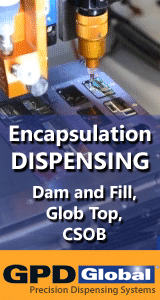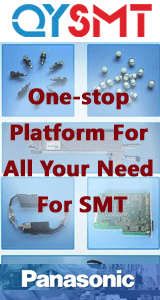The system is a major innovation and advancement of the XRF analysis technology, and is the only XRF system designed specifically for the electronics industry to provide fast, accurate and portable screening capability to meet RoHS directives.
RMD has added a new solder analysis and identification feature to its LeadTracer-RoHS XRF system that accurately identifies all solder alloys within minutes. This is helpful when completing rework or repair for finished assemblies. Additionally, this new resource accurately performs a �solder pot� analysis, allowing users to track �changes� in their process. This is especially beneficial for SAC alloys in which an increase in Cu and Pb content (due to component drag-out) can affect not only the soldering process, but also RoHS compliance status.
As a further benefit to users, the solder analysis and identification feature addresses various potential �weak links� in the production chain, especially in a dual-alloy manufacturing operation. These include boards for second-side assembly on a non-continuous line; boards taken off-line for inspection and analysis; reflow boards moving to wave or selective soldering; boards split into two batches due to line shortages; boards moving from production to rework areas; boards held for missing parts or for component recovery; components held in rework areas; and components from placement reject trays.
The LeadTracer-RoHS XRF system has a unique approach because it analyses the entire body of the components in a short period of time, rather than simply carrying out a surface analysis. This speeds up the RoHS screening requirements and improves the overall throughput of the quality control process. The LeadTracer-RoHS' ability to analyze the entire energy spectrum eliminates the possibility of false-negative indications in components that otherwise would have found their way into the manufacturing process.
The use of non-compatible components such as those containing lead in a lead-free process will result in contamination of the solder pot, which is costly and environmentally undesirable. Elimination of non-compatible components from the process saves time, money, and leads to improvement of the line output. Additionally, the consistent flow of parts will reduce the maintenance and repair of the machinery used in electronics assembly. RoHS directives restricting the use of certain substances in electronics have created numerous challenges in both the screening and implementation process. LeadTracer-RoHS' innovative approach with enhanced detection capabilities provides the screening tool that the industry needs to meet the numerous RoHS directive challenges.
The LeadTracer-RoHS XRF system is now available with a sample preparation stand developed with the needs of the end user in mind. The stand has been ergonomically designed for optimum ease-of-use and accuracy and is equipped with RMD Instruments exclusive �quick disconnect� grip to enable users to operate the hand-held, portable LeadTracer-RoHS as a benchtop unit.
About RMD Instruments LLC
RMD has been a designer and manufacturer of XRF and other scientific technologies since 1974. In addition to the electronics industry, RMD produces instrumentation for the medical and applied sciences industries. For more information, contact: Steve Glass, Business Development Manager, RoHS.WEEE Division, RMD Instruments, LLC, 44 Hunt St., Watertown, MA.







